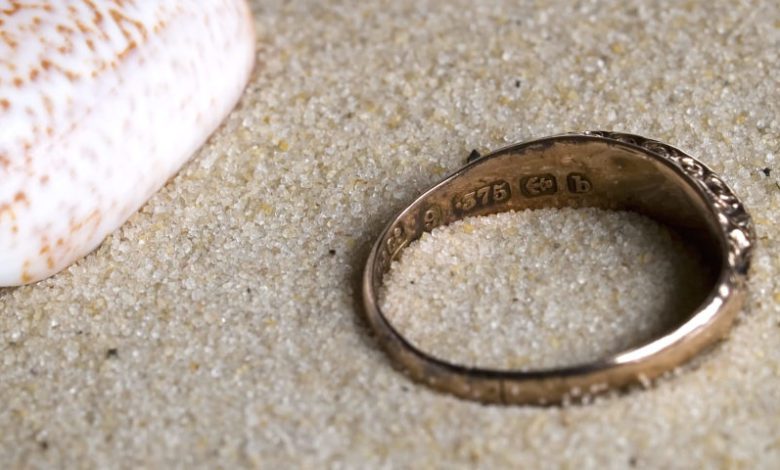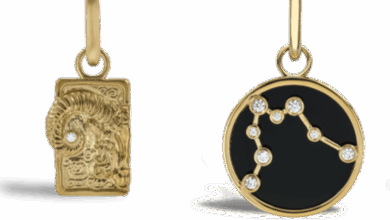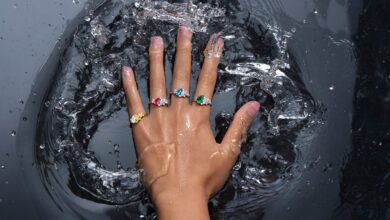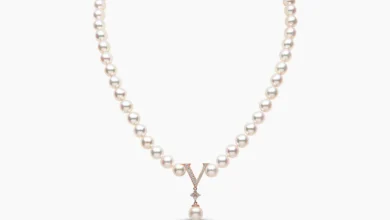What does the offshore hallmark mean for the jewellery industry?
The British Hallmarking Council formally announced its new offshore hallmarking policy, requiring all jewellery struck by UK assay offices’ overseas operations to be stamped with an unique mark. What it means for the future of hallmarking is up for debate. By ALESSANDRO CARRARA

Register to get 1 free article
Reveal the article below by registering for our email newsletter.
Want unlimited access? View Plans
Already have an account? Sign in
“We were extremely happy when the British Hallmarking Council (BHC) finally, after a great deal of pushing and shoving from all sides, agreed that jewellery pieces hallmarked overseas should have a different mark to the ones we strike domestically,” says John Langford, director of Braybrook and Britten, triumphantly.
For many years the BHC’s policy on offshore hallmarking had been that no special mark from items struck overseas by UK assay offices was required. This had been originally established in 2014 following the publication of the Legislative Reform (Hallmarking) Order in 2013 by parliament.
This all changed in May 2018, after the British Hallmarking Council formally announced that hallmarks struck overseas by UK Assay Offices will now be distinguished by way of specialised marks. Prior to this announcement there had been extensive discussion within the council at a special meeting in January and the group’s regular meeting in March, in order to ‘determine the way forward on the matter’.
Langford, a 20-year veteran in the industry, who also spearheaded Save UK Hallmarking – which aimed to ensure that hallmarks struck in the UK had a city mark, whilst items struck overseas had a unique stamp instead – says the situation before this was “misleading to the consumer” and “undermined the value and principal of national hallmarks”. He says: “We were all in favour of the assay offices opening up operations overseas to conduct hallmarking and happy for the hallmarking to be legal for sale in this UK. But we weren’t happy that they were using identical Birmingham hallmarks in India.”
THE NEW POLICY
Noel Hunter, chairman of the British Hallmarking Council, says an amendment to the official requirements has been in the works for some time. “Taking into account of all the views, we collectively determined to change the policy established in 2014.” However, he also agreed that the off-shore mark design must comply with standing legislation. He says the BHC is now focussing on “how the changes may best be implemented to ensure minimum cost and disruption to the trade whilst ensuring clarity for consumers”.
In his view, the change of policy reflects “where we are in terms of the industry.” As the country heads towards Brexit, he says, “we don’t know what that quite means” just yet. “We want to see how the industry can be best supported in Brexit discussions going forward as well.”
Langford intimates that Brexit played a role in the dynamics that framed the discussion. A slew of European countries, he says, had effectively asserted: “There is no reason why we should accept the two hallmarks as being equivalent if they come from a different country. Therefore if you want to ship things to us with a UK hallmark we would like to see some paperwork accompanying as to which country the jewellery was assayed in.”
He believes there was a danger this would have impacted all of the assay offices and many manufacturers, because “the Europeans would have used it as a pretty good excuse to put up a paperwork barrier to British products coming out of the UK”.
IS THIS A VICTORY?
“I think the most important aspect of this issue is that that it has been finally put to bed, because it’s been going on for a while,” says Andrew Hinds, director of the UK’s largest family-owned independent jewellers, F Hinds, and current deputy chairman of the NAJ, “as it hasn’t been an issue of customers for us, it’s just been a distraction trade wise”.
Hinds believes that, having finalised the discussion, the NAJ can “get on with their ‘Made in Britain’ Mark’”, which he sees as an “excellent opportunity because it give people an indication of where something has been made”.
“I think there are consumers out there both in the UK and overseas looking for British-made items, and we would promote that in our stores whether we can,” he says. “Obviously it’s difficult with a lot of the products because there is only a limited amount that is made in the UK, but where something is made in the UK we are keen to support that.”
Simon Johnson, chairman of the NAJ doesn’t it see as a victory or defeat. “We feel the outcome provides a good balance in that those who want a clear differentiator have it, but the individual assay office mark is still clear,” he says. “It is a victory in that we wanted marks to be kept as simple as possible for the consumer.”
James Deakin, gemologist and designer at Birmingham based luxury cufflink and accessory manufacturer, Deakin and Francis, is pleased with the results. “It gives clarity to consumers as to where a piece has been hallmarked, in the same way a sponsor’s mark gives credibility to an item’s pedigree, and this can only be a good thing,” he says.
He described hallmarking as an “essential and important part” of his firm’s manufacturing process, and says it’s important to be “completely transparent” where hallmarking is concerned. “Putting a British hallmark onto a product that never touches British soil seems misleading to me.”
WHAT WILL CUSTOMERS MAKE OF IT?
Johnson says he would be interested to see research on consumer perception, but is aware that there is a low level of consumer understanding of detail beyond awareness of the importance of hallmarking in general. “An enormous amount of overseas manufactured jewellery is hallmarked in the UK, so the priority for those who manufacture in Britain must be able to find a way to be able to demonstrate that they do this,” he says.
Consumer understanding is the sticking point: “This is a common issue, [and] the consultation showed that many think a particular stamp means it was manufactured in that location, something the hallmark has not done for a very long time, if ever,” he says. “They should care [about the hallmark], and we should all work together to overcome some of the miscommunication around hallmarking and what it actually means.”
Langford sees the huge investment in assaying technology in recent decades as a boost to consumer confidence, pointing specifically to the “credibility” of UK assay marks. He thinks it transcends borders too: UK hallmarking is recognised so widely throughout the world that “there is no need for a second level of guarantee to be stamped on something if it has a UK hallmark on it”.
“It’s taken us 700 years to build that reputation and confidence throughout the world. If it ended up that we effectively took those marks and rented them out to any country that fancied having an operation to stamp UK hallmarks, which is effectively what was being done, then it would have only a matter of time before that confidence would start to be diluted and break down.”
THE FUTURE OF THE HALLMARK?
Arguably a key consideration in supply and service chain in a globalised jewellery market, is cost, the mention of which prompts Langford to ask, if jewellers were able to strike UK hallmarks anywhere in the world, “who would pay the price of striking UK hallmarks in Britain?” He adds: “London would have an assay office in Hong Kong, Edinburgh would set one up in China, Sheffield would have one in Thailand and no one would be striking hallmarks in the UK anymore.”
He goes on to say: “The industry could service the UK retail trade faster from India than from from the UK at a price advantage. If I had a manufacturing plant in Thailand and a UK assay sub office on the corner of the property I would think it is a brilliant idea because I would be making lots of money,” he adds, though he stresses that jewellery manufacturing in the UK could suffer as a result. “Once you roll that out to six or seven countries you effectively wipe out the UK manufacturing base.”
“You can’t reduce everything to what benefits one part of the market, making things easier for those who manufacture overseas and then import,” he explains, adding: “You don’t want to destroy UK infrastructure, simply to accommodate that fact or actually do something that would undermine the whole principal of something with such enormous value as the assay service.” He predicts that if 90% of UK assay services moved overseas the UK wouldn’t have an assay service anymore. “We would simply dissolve it,” he predicts.
Hinds is also adamant that hallmarking as a practice won’t become outdated, indeed it will become even more relevant. “There is so much international trade going on now,” he says, “and that trade has gone not just being from business to business, where it’s easy to control things, but now there is a lot of individual trade going on. At the moment I know there are people buying items overseas with no hallmarks on them and no guarantee of the quality of those items in terms of the fineness of the metal. I think hallmarks will become more important worldwide, in terms of providing people reassurance when they can’t see the item they are buying.”
Johnson says that, fundamentally, hallmarks are there to “show what the item is made of and which body tested it”. He believes that this is still the case today, and concludes by saying: “Consumers will have a powerful protection for hallmarked items, regardless of [which country] this has been done.”







